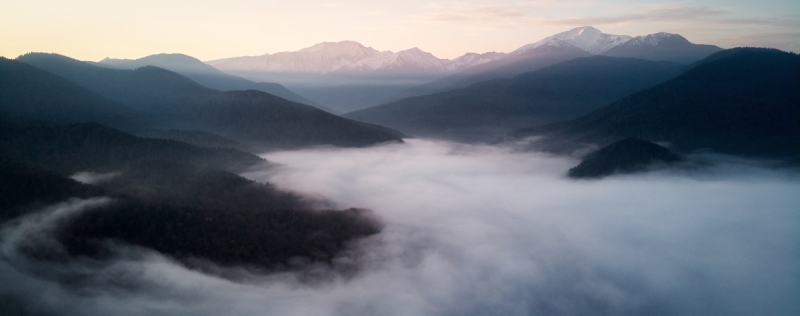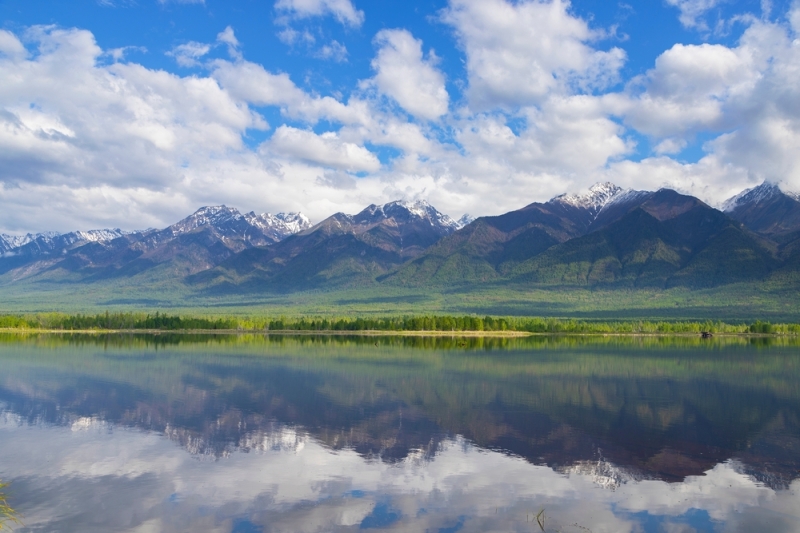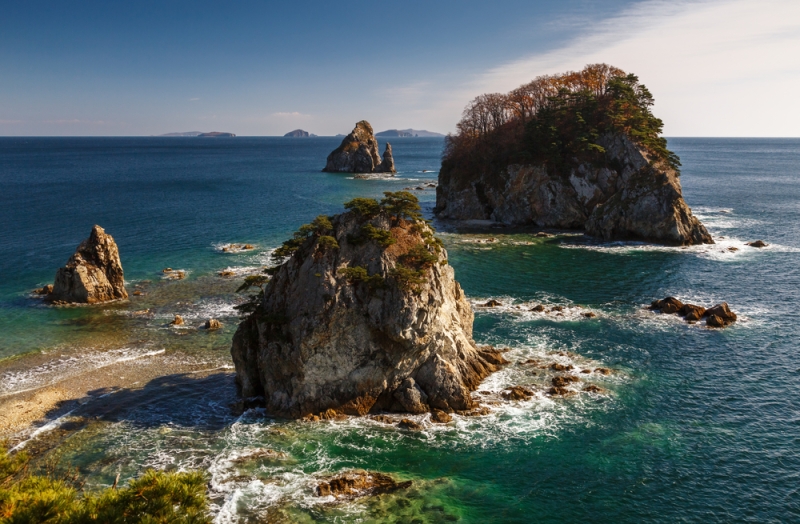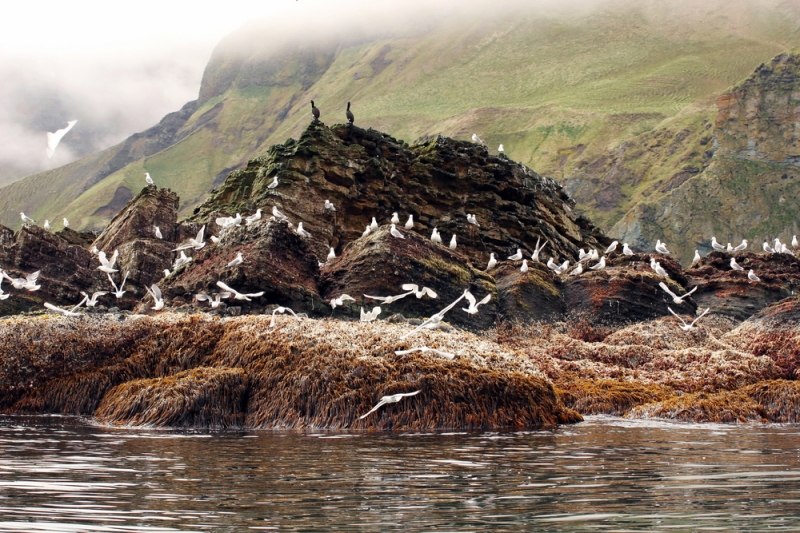
To travel through these almost wild lands you need special passes, tour packages or off-road vehicles. But don’t let these difficulties scare you, because about such places you can say: hard to reach, easy to love, impossible to forget.
Tunkinskaya dolina in Buryatia
When you try to describe the nature of the valley, you would like to say that it is blue. This impression is made by the high, clear sky reflected in the surface of the lake, and the play of light and fog in the mountains hanging on the horizon. The powerful white peaks of the Sayan Mountains contrast with the green and golden steppes at their feet. It’s not for nothing that these places are called the “pearl of Buryatia” or “Siberian Switzerland”.

According to legend, hundreds of years ago Genghis Khan led his army of thousands along the banks of the Irkut River, which flows through the valley. Today, in the village of Arshan, located in this area, a resort with mineral springs has been opened.
The rules for visiting the Tunka National Park are not as strict as in the reserves, because there are settlements in the valley. However, there are still restrictions necessary to preserve the unique ecosystem in which snow leopards, red wolves, manul cats and other rare inhabitants live. For example, you can make fires only from firewood prepared by park employees. Fishing is also allowed, but it is forbidden to take dogs with you for a walk.
How to get there: by plane to Ulan- Ude or Irkutsk, and from there by regular bus or car.
Far Eastern Marine Reserve in Primorsky Krai
The quietest nature reserve in the Far East is a marine one. Octopuses, cuttlefish, squid, scallops and other representatives of the underwater world are studied and protected here. Do not forget about terrestrial flora and fauna. For example, the Ussuri tiger, Far Eastern leopard and other rare mammals and birds live in coastal forests. About one hundred thousand birds gather annually on one of the eleven islands. Watching them is one of the most popular activities on the reservation. There is also a special excursion – a water excursion. Participants sail along the sea along bizarre rocks, but do not land on the shore so as not to disturb the unique natural conditions that have developed there. If you’re lucky, you’ll see a colony of seals along the way.

The reserve is divided into four zones: tourists can visit two of them with a voucher, leaving a request on the reserve’s website, and only one – on their own. The fourth zone is completely closed from people.
How to get there: first fly to Vladivostok, and get from there as part of an organized group starting from the visitor center. On your own (after obtaining a basic permit), you can get to the public Popov Island by sea. To the southern and eastern regions of the reserve (with special permits) – from the village. Slavyanka and village Andreevka by sea taxi.
Reserve in the Rostov region
A unique natural object, the ecosystem of which is protected in the reservation, is the relict salt lake Manych-Gudilo. Bird tourism lovers will have a unique experience here. One of the main migration routes of migratory birds passes over the territory of the reserve, so in some months huge flocks of gray cranes, pelicans, gulls and other birds can be observed near this reservoir.

Rostov Nature Reserve is the only one in Russia where mustangs live. Special routes and eco-trails have been organized to observe wild Don horses.
But horses, lakes and birds are not everything! In April, bright carpets of blooming tulips and poppies unfold here. To show this magnificence, themed mini-trips are organized. You can visit the reserve as part of an excursion or on your own, but strictly by appointment.
How to get there:first to Rostov-on-Don, from there about 250 km by rented car or regular bus to the visitor center of the Rostovsky Nature Reserve in the village. Orlovsky. You can also take the train to the station. Double and then by taxi.
Commander Islands in the Kamchatka Territory
Despite the remoteness from the coastline of Petropavlovsk-Kamchatsky, the Commander Islands are considered one of the most accessible tourist destinations for year-round whale watching. Sometimes excursion participants may be lucky enough to see dozens of fountains and huge tails. This archipelago can be called a “quiet place” with a stretch, because one of the largest and loudest bird colonies is located here. Noisy birds can be crowded out only by walruses, fur seals or elephants and sea otters. The territories of the islands are part of the Komandorsky State Natural Biosphere Reserve, so you can visit them only with a voucher.

How to get there: by plane to Petropavlovsk-Kamchatsky, and from the city by air or by sea to the village of Nikolskoye, located on Bering Island. Such a flight can take about 3-4 hours. By the way, for excursions to the islands of Toporkov, Ariy Kamen and Medny and for any access to the sea by boat, a border pass is also required.
Ukok Plateau in Gorny Altai
Some areas of the Altai Mountains are popular among tourists due to good transport accessibility. But there are also those that can only be reached by SUVs or horses. For example, the Ukok plateau. Only the most desperate travelers dream of climbing to the harsh highlands, where the weather is always bad. They want to see in person the lands in which the famous “Princess of Ukok” was found – the mummy of a noble young woman who lived before our era. The permafrost preserved the rich clothes in which she was buried, and the remains of six horses in harness and saddles, and even tattoos on her skin. Today, one of the most important archaeological treasures of the Altai Republic is located in the Anokhin National Museum in the city of Gorno-Altaisk. Visitors can see the princess only a few times a month – strictly on the days of the waxing moon. The Ukok Plateau is part of the complex site “Golden Mountains of Altai”, which is included in the UNESCO World Heritage Register.

How to get there: to Gorno-Altaisk (faster by plane), and then about 570 km along the Chuysky tract by car through the village. Kosh-Agach. Since the road is very difficult and the plateau is difficult to access, tourists are advised to book a place in an organized excursion group in advance.
Onekotan Island in the Sakhalin Region
If the Little Prince lived here, then he would have to clean the local Krenitsyn volcano with double zeal. From above, the largest two-tier volcano in Russia looks like an open nesting doll. In a wide old crater, Lake Koltsevoye was formed, from the waters of which a whole cone of a new small volcano still sticks out. Many people want to come to the Kuril Islands to see one of the “hundred wonders of Russia” with their own eyes, but this is not so easy. Sunny days are rare here; most of the time the miracle island is hidden in fog and three-meter lake waves raised by squally winds. The best chance of clear weather is in July, so it is best to plan your trip during these dates. You can get to Onekotan only with fishing boats or by rented helicopter.

How to get there: sail for several days by ship from Petropavlovsk-Kamchatsky or a little less than a day from Severo-Kurilsk. The schedule is irregular and depends on the weather. It is also possible by helicopter from the southern airport of Kamchatka, near the village. Zaporozhye (about two hours). The distance from Kamchatka is about 180 km, and from Sakhalin – about 750 km.
Big Arctic Nature Reserve in the Krasnoyarsk Territory
Polar bear, white gull, white owl, beluga whale, white hare and baby seals – you might think that they are all residents of the Snow Queen’s domain. But in fact, these are rare inhabitants of the polar territories of the Taimyr Peninsula, which is part of the Great Arctic Nature Reserve. The endless ice deserts and 25-meter thousand-year-old icebergs are very difficult to get to. Sometimes only by air, and then only when the weather is good for flying (it’s better to check about it after the fact). The area in the upper reaches of the Yenisei River is considered more accessible – tundra covered with mosses and lichens. The snow cover does not stay there due to strong winds.

For lovers of an unforgettable tourist experience, several excursions have been organized in the reserve, among which ornithological safari is in particular demand. The migratory route of migratory birds passes directly above the protected area, so here you can observe accumulations of thousands of birds of different species. Ecotourists can also wander with a guide along the “Taimyr Labyrinth” route, laid along the swampy branches of the Yenisei delta. Visiting the natural reserve is possible only with the permission of the directorate and is strictly regulated by the rules. Among them is to leave a request through the reserve’s website, which will indicate the exact route.
How to get there: fly by plane to Norilsk, and from there by taxi or bus to the visitor center in Dudinka (about 50 km) . After receiving permission, by private car, bus or helicopter, depending on the starting point of the chosen route in the reserve.

